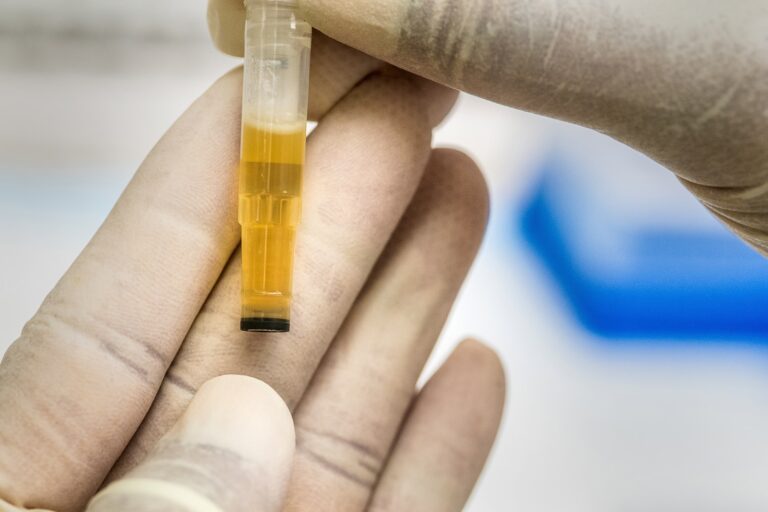Many women are afraid that peeing after sex will affect their chances of pregnancy. But this belief is unfounded. Peeing after sex is actually good for sperm health and may help women avoid certain infections.
A home sperm detection test is not accurate for several reasons. A doctor can use a microscope to examine the urine for sperm. This method is more accurate, but requires the woman to masturbate to climax.
Detecting sperm in the urine
Normally, sperm are found only in the tubes that carry urine from the bladder to the outside of the body (the urethra). Sperm is also released into the vaginal canal during ejaculation. However, sperm can sometimes enter the urine when it comes into contact with semen, which is what happens in cases of retrograde ejaculation or when men have aspermia (no apparent ejaculation).
The presence of sperm in the urine may indicate recent sexual activity or pregnancy. It is important to note, however, that sperm can survive for a short time in other bodily fluids such as vaginal secretions or cervical mucus. In addition, a positive test result does not necessarily mean that the sperm fertilized an egg.
A sperm detection test is typically done in a doctor’s office or at home. The process is fairly simple, but it’s important to follow the instructions carefully to ensure accurate results. Additionally, women should avoid taking certain medications such as antibiotics or diuretics before taking a sperm detection test because they may alter the pH balance of the urine, causing inaccurate results.
The presence of sperm in the urine usually indicates recent sexual activity or pregnancy. The results of the test can help the doctor determine the best treatment options for the patient. However, it is important to remember that sperm can survive in other bodily fluids for several days, so the presence of sperm in the urine does not always indicate fertilization.
How sperm is detected
Sperm can be detected in a urine sample by using a sperm detection kit. The kit contains a strip that reacts with proteins found in the sperm, causing a color change to indicate its presence. This method of detecting sperm is more accurate than a dipstick test. However, it can be more expensive.
Some sperm may leak into the urine through the urethra, particularly during the first pee after masturbation or sexual intercourse. This is called retrograde ejaculation. Similarly, seminal fluid may leak into the urine from other parts of the body, including the prostate. This can be a sign of an underlying condition.
The results of a semen analysis are usually available within a few hours of collection. The test measures sperm concentration (sperm count), motility, morphology, and pH. The sperm count is important because it determines the number of sperm available to fertilize an egg. A low sperm concentration can make it difficult to get pregnant.
A normal semen analysis will contain about 20 million sperm per milliliter of fluid. A low sperm concentration or abnormal ejaculate volume may be a reason for infertility. In addition, the sperm count can also be affected by certain medications and medical conditions. If a patient has azoospermia, which is when the semen is released back into the bladder instead of the urethra during sexual intercourse, then the doctor will recommend a post-ejaculation urinalysis or PEU to check for the presence of sperm in the urine.
Detecting hCG in the urine
Detecting hCG in the urine is a key step in confirming pregnancy. This hormone is produced in the liver, and it’s released into the bloodstream when ovulation occurs. During this time, the sperm and egg combine to form a fertilized embryo. A hCG test can be used to confirm this fertilization and determine the duration of gestation. It can also be used to monitor the progress of a pregnancy, as it provides a more accurate prediction of due date.
Most hCG tests are performed using a dipstick, which is dipped into a sample of urine and then read after several minutes. It can be difficult to interpret the results of this type of test, especially if you’re taking medications that affect your hormonal balance. These include antibiotics and diuretics, which can alter the pH balance of your urine.
The sensitivity of hCG in urine varies according to the method used and the woman’s menstrual cycle. It’s important to follow the instructions provided by your doctor carefully. This will help ensure that the hCG levels in your urine are accurate and consistent.
A sperm test can help you determine whether or not you have aspermia, a condition that causes semen to flow back into the bladder instead of out through the urethra during sexual activity. This is sometimes referred to as retrograde ejaculation and can cause problems for your fertility. In addition, a sperm test can also be helpful in identifying the cause of the aspermia.
Detecting sperm in other bodily fluids
Sperm can also be detected in other bodily fluids, such as vaginal secretions and cervical mucus. These bodily fluids typically have a shorter time frame for pregnancy than urine, but they should still be monitored to prevent unintended pregnancies. Additionally, sperm can survive outside of the body for a short period of time. Consequently, it is important to use reliable forms of contraception consistently and correctly.
Women should always carefully read the instructions for a sperm detection test before using it, especially if they are taking any medications that could affect the results. These can include fertility drugs and medications that increase levels of hCG. It is also recommended to take the test at the same time each day to get consistent and accurate results.
The ability to detect sperm in female urine depends on the presence of certain chemicals. These chemicals allow a lab to differentiate male and female urine. For example, a lab can use a reagent known as Christmas tree staining to detect sperm cells in a sample of semen. This method uses a combination of two reagents to produce a distinctive color pattern that makes the heads and tails of the sperm cell easily distinguishable from one another.
Other methods for detecting sperm in female urine include dipstick tests and home fertility tests. However, these methods can be inaccurate and influenced by blood or protein in the urine. They are also more expensive and require a trained professional to conduct them.
See Also:






